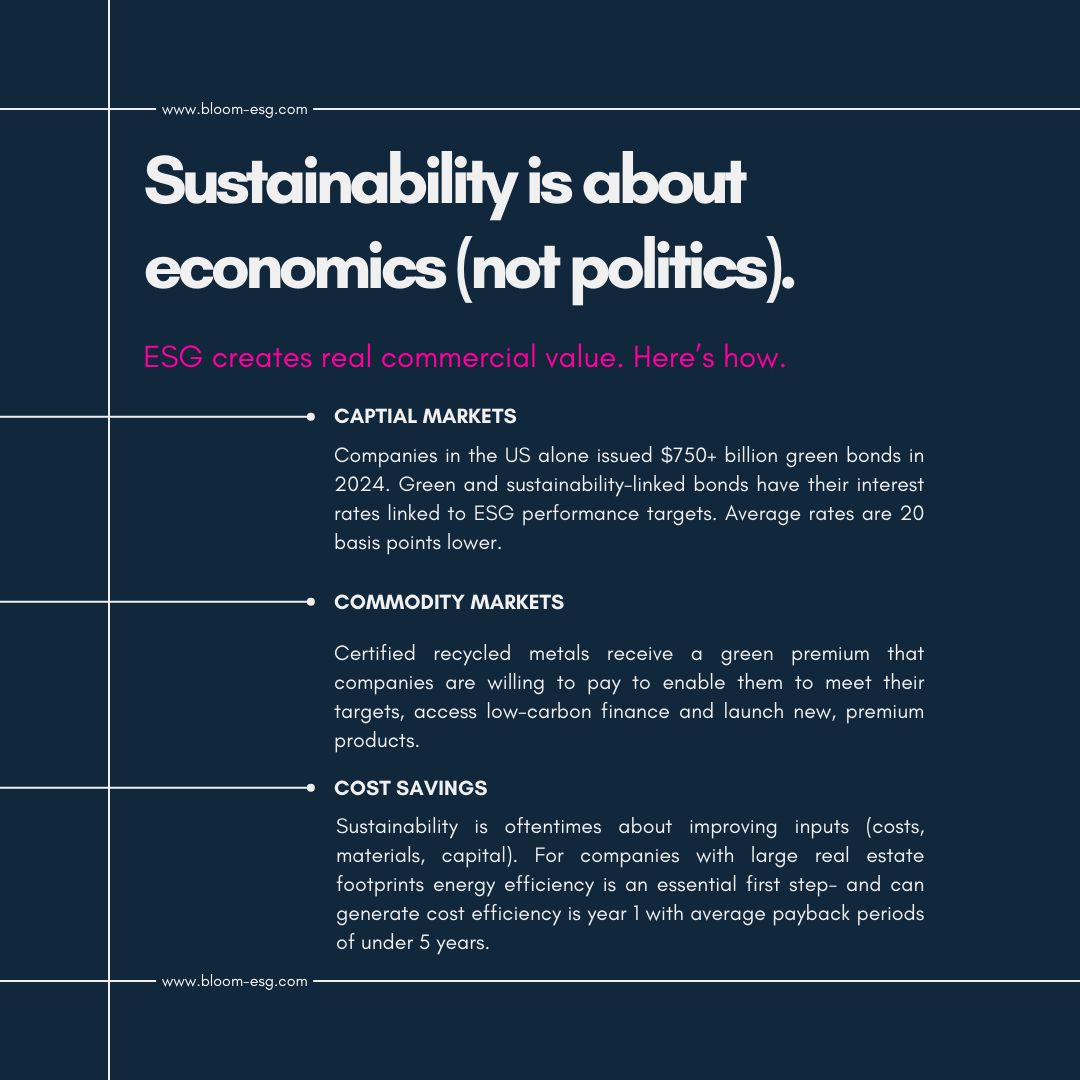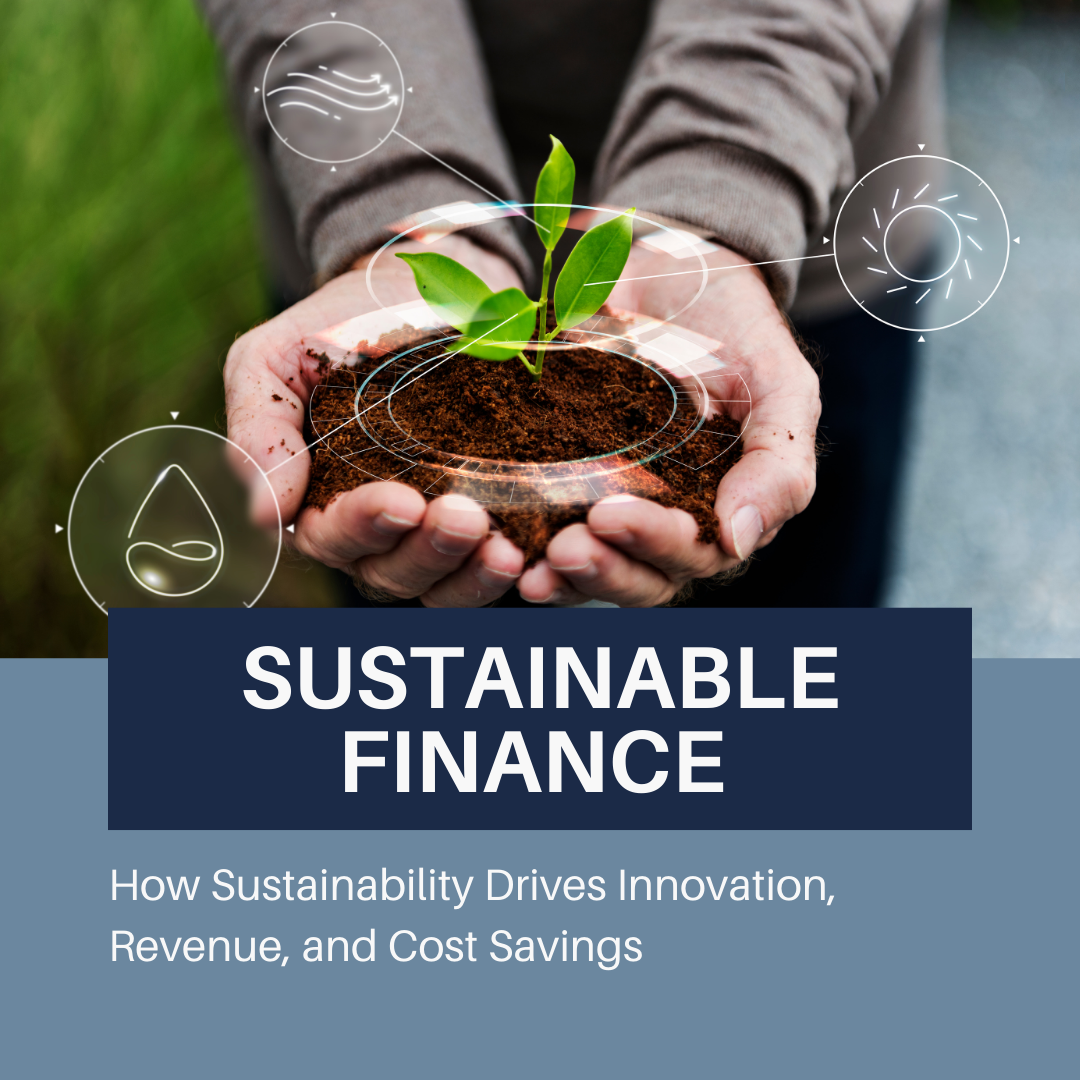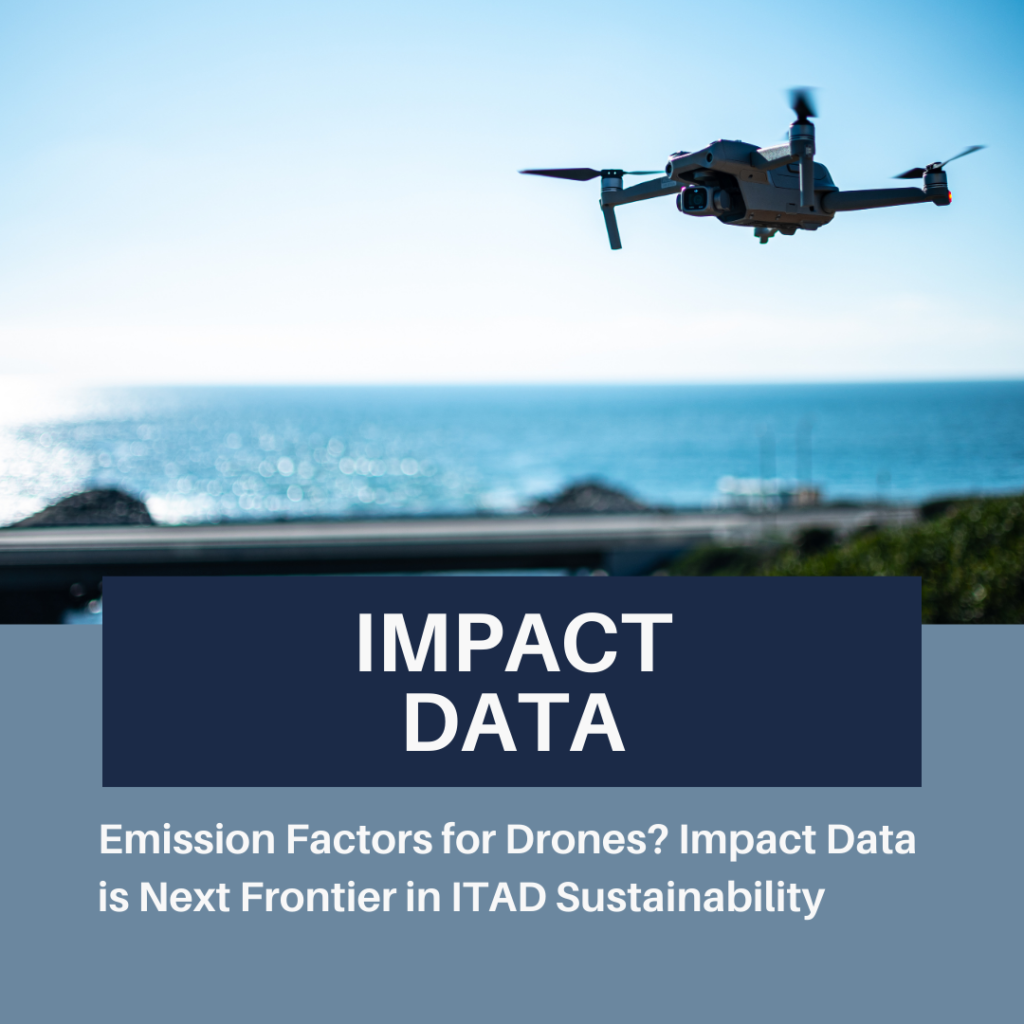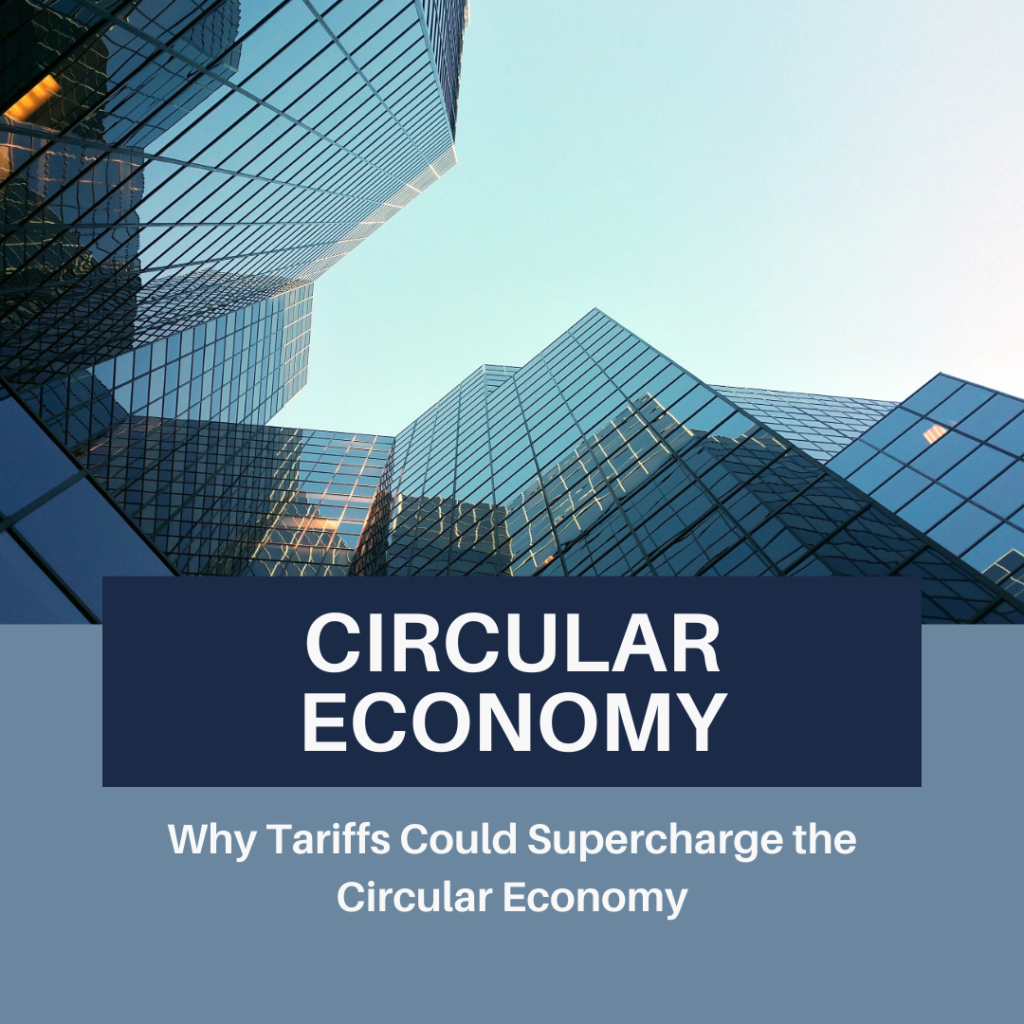Politics has changed. And on the surface it might seem like companies are changing their sustainability priorities.
It might even feel like ESG is going through a re-branding moment too. But the challenges facing many companies remain the same: the energy transition, procurement of critical commodities and resilience planning are only increasing in importance.
The World Economic Forum recently put it like this: “The focus of corporate decarbonization has shifted to understand the return on capital. Returns are measured by financial gain, carbon intensity reduction, or electron efficiency.“
Looking beyond the headlines I continue to find sustainability initiatives that drive innovation and create financial benefits for businesses.
Here are three examples that we will only see more of in the coming years:
Bond markets: better terms
Companies in the US alone issued $750+ billion green bonds in 2024. Green and sustainability-linked bonds have their interest rates linked to ESG performance targets. When a company achieves its target it benefits from preferential borrowing terms.
A recent study showed that the average green bond offers +20 basis point benefit. That’s the same as improving creditworthiness from BBB- to AAA-.
Top line: new revenue
Commodities markets offer certified recycled metals like copper at a premium to virgin. While the physical quality of both products are the same the inputs are completely different. For example: recycled secondary copper…processed using electric arc furnaces…powered by green power.
Certified commodities can benefit from receiving a green premium that companies are willing to pay to enable them to meet their targets, access low-carbon finance and launch new, premium products.
Cost savings: energy efficiency
Sustainability is oftentimes about improving inputs (costs, materials, capital). For companies with large real estate footprints energy efficiency is an essential first step- and can generate cost efficiency is year 1 with average payback periods of under 5 years. Programmes can be as simple as swapping out old lighting systems with LEDs. In the UK Tesco PLC saved more than £100M annually with just this one measure.
Energy efficiency programmes delivered and financed by specialist firms that also finance the programme can deliver cost savings from day 1.
Special thanks to Hannah Hauman for sharing the link to WeForum.


Sebastian Foot
Co-founder of Bloom Sustainability Advisors.20+ years sustainable finance experience.



